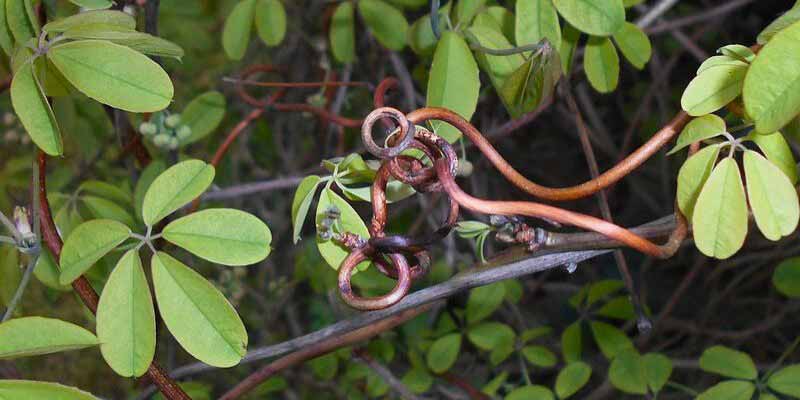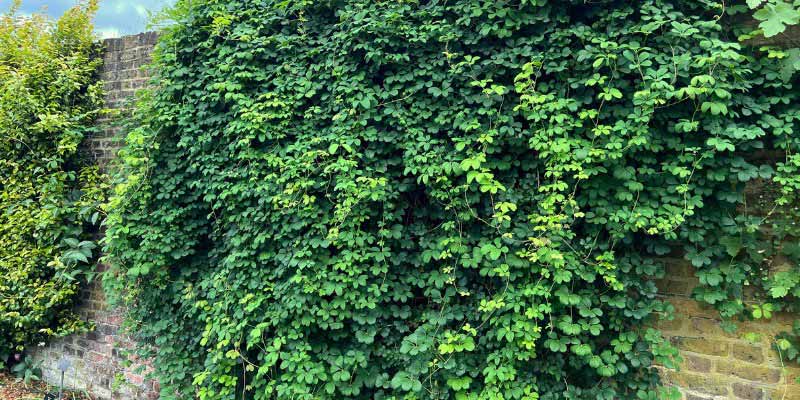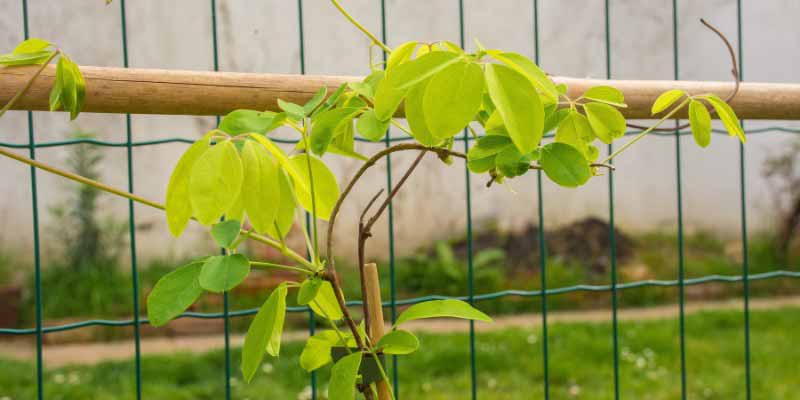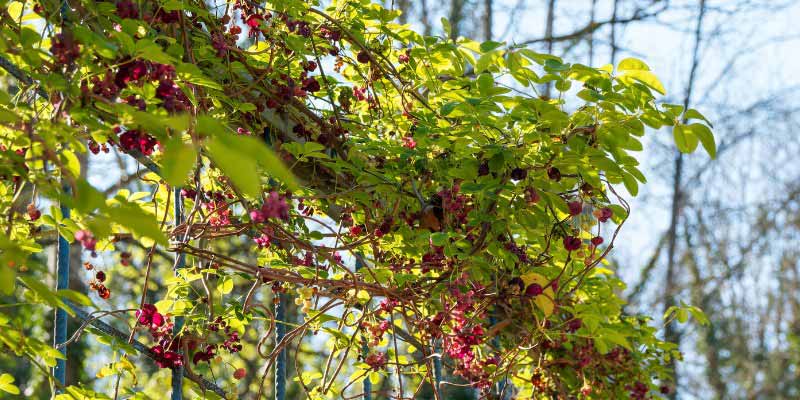Akebia, also called "chocolate vine" for its intoxicating scent, is a voluble climbing plant ideal for dressing walls, trellises or pergolas thanks to its long flexible stems and beautiful scented flowers in spring. To bring out its full potential, training is essential. Here is how to proceed step by step to install it correctly and guide it onto a support.
How does Akebia attach itself?
Akebia quinata (type species) is a voluble climbing plant ready to coil around any support within reach. Unlike plants with adhesive pads, such as ivy, it does not attach itself unaided to walls or other vertical surfaces. It needs to be guided and tied to a support, because it climbs by twining its stems around whatever it finds. That is why good training is important to help it develop harmoniously. This vigorous, voluble plant reaches full size in three to five years, depending on growing conditions. In favourable conditions, Akebia can grow several metres in a single season, quickly reaching 6 to 10 metres in length and covering 6 to 8 m². Unlike more vigorous lianas such as wisteria, its more delicate stems do not damage supports they climb on. However, because of its rapid development and size, it is preferable to provide a location where it can be easily contained and to choose a support large and sturdy enough to sustain this exuberant plant.

Which support should you choose?
Akebia needs space and a support tailored to its size to spread properly. Its stems are too flexible to support their own weight. However, once young shoots are guided at the start, it will naturally twine around the support. It can thus climb up a wall, embrace a tree trunk, scramble up wire mesh, or grip a trellis or a fence. You can choose a wooden trellis (rot-resistant exotic woods require little maintenance). Steel trellises, meanwhile, are perfect for more ambitious projects, such as covering a large façade or a pergola. Wires stretched between sturdy posts are also an option. They suit high-growth plants that will eventually weigh on the support. Remember to fix the support securely to prevent it giving way under the plant's pressure over the years. Once installed and well guided, Akebia will manage almost by itself.

Steps to train Akebia
Materials needed
- Robust trellis or wires
- Flexible garden ties (raffia, jute twine)
- Pruning shears for pruning
- Spade for planting
At planting time, prune damaged or too-weak stems. This encourages better establishment and stimulates growth of new shoots. If Akebia is already well developed, untangle stems so you can lay them correctly on the support. Young stems being more flexible, they are easier to tie. Stems will be tied to the support with flexible ties, such as raffia, rubber or foam ties, to avoid damaging the shoots. Begin training from the start of the growing season, attaching stems at regular intervals to the trellis or cabling.
- Choose suitable support : Use a trellis, pergola, wall or fence as support for your Akebia.
- Install the support : If using a trellis or pergola, ensure it is securely fixed to support plant's weight. Install support where you wish to train your Akebia.
- Plant Akebia : Plant at an appropriate distance from the support, generally about 30 cm, to allow good air circulation and optimal growth.
- Tie the stems : Fix stems to the support using flexible ties. Make sure to not tighten too much to avoid damaging stems.

- Regular monitoring : Monitor growth and adjust ties as Akebia grows. It tends to spread, so intervene to maintain a harmonious shape. In spring, when new shoots appear, gently guide them towards the support. Using a pruning shear, remove dead or damaged stems to promote balanced growth.
- Prune if necessary : If Akebia becomes too dense or invasive, prune to maintain appropriate shape and size. Pruning can be done after flowering to avoid reducing flower production. This is a vigorous plant that requires moderate pruning to keep shape and limit spread. Avoid drastic cuts, as this liana is sensitive to them. Also, it is important to regularly remove creeping branches that may take root and spread the liana invasively. By following these few tips, you can fully enjoy Akebia's beauty without it becoming invasive. For more information, see our tutorial by Gwenaëlle: "pruning Akebia".

































Comments